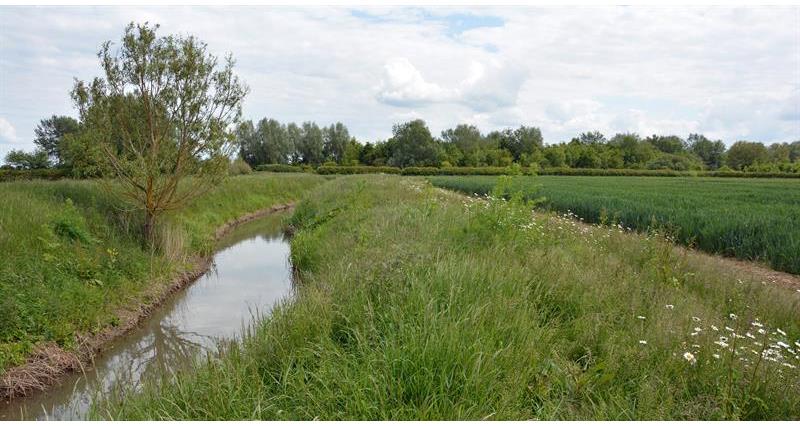What
Networks of grass buffer strips next to watercourses are a particular priority to buffer them from input applications and surface run-off.
Why
To provide a grassy buffer so that soil, run-off, pesticides, manures and fertiliser stay out of watercourses on your farm, to help improve water quality.
- Field margins are generally the least productive areas of a field and a grass strip around watercourses and ponds can reduce costs from wasted inputs.
- Having at least 5m uncropped from the top of the bank helps meet LERAP requirements.
- Grass buffer strips help to keep pesticides out of the watercourse and avoid water pollution.
- A tall, tussocky grass margin reduces spray drift entering watercourses.
- Grassy buffer strips will provide essential over-wintering habitat for beneficial insects and spiders, which will feed on crop pests in the spring, and provide chick food for birds such as partridges, tree sparrows and reed buntings.
- Grass buffer strips also support populations of small mammals, such as voles and harvest mice, providing ideal hunting habitat for barn owls and kestrels. Wide margins away from roadsides can reduce the risk of barn owls being killed by road traffic.
How
Recommended margins for different slopes
- Gentle (up to 3 degrees) - consider flower-rich margins if the soil pH index is less than 2, or establish using natural regeneration (if not dominated by noxious weeds).
- Moderate (3 to 7 degrees) - if there is any evidence of soil erosion and run-off, create a tussocky grass margin to intercept these; otherwise create a more diverse margin as described above for gentle slopes.
- Steep (more than 7 degrees) - create a tussocky grass margin with 10% cocksfoot or timothy grass and 90% other grasses.
Establishment
- Autumn (August/September) is the best time to establish grass margins. If there is a heavy weed burden, spray with a herbicide such as glyphosate or glufosinate before cultivation.
- Assess whether there are any issues of soil compaction in the margin and, if necessary, plan appropriate cultivations to resolve these before establishing a green cover.
- If you have to establish in spring, then use a higher seed rate.
- Do not apply any fertiliser or pesticides (other than spot-spraying noxious weeds) to the margin after sowing.
Management
- Cut the sward two or three times in the first summer to control weeds before they set seed and encourage perennial grasses to tiller.
- Do not use the grass area for regular vehicle access, turning or storage to avoid soil compaction.
- Avoid pesticides and fertiliser drifting into the margin.
- Top or spot-spray any noxious weeds as soon as possible to avoid them becoming established.
- Only cut if required to control scrub or injurious weeds. The 2-3m adjacent to the crop can be cut annually to make operations easier. This is best done in March to retain the cover through the winter.
